From the Chicago Reader (August 26, 1988). — J.R.

UNCOMMON SENSES
Directed and written by Jon Jost.
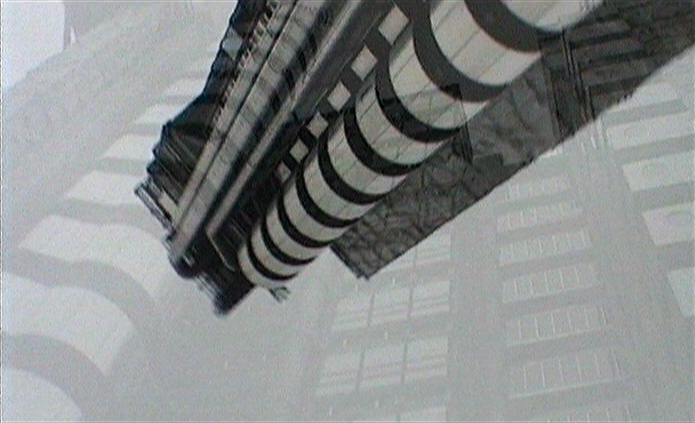
The film essay, as opposed to the documentary, remains in some respects the most neglected of contemporary film genres, by filmmakers and audiences alike, perhaps because it is seldom acknowledged as a film form at all. The only recent mainstream examples that come to mind are the first two parts of Godfrey Reggio’s trilogy, Koyaanisqatsi (1983) and Powaqqatsi (1988). As an English reviewer remarked of Koyaanisqatsi — a film that, incidentally, owed most of its exposure to Francis Ford Coppola’s distribution — “Its vainglorious appeal as a ‘new cinematic experience’ is really to an audience that would rather be open-mouthed than open-minded.” I found its glib borrowings from the avant-garde so irritating that I had no sense of regret about missing its sequel.
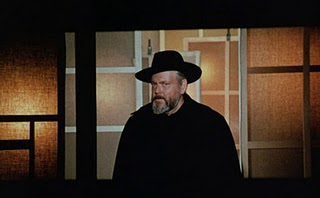
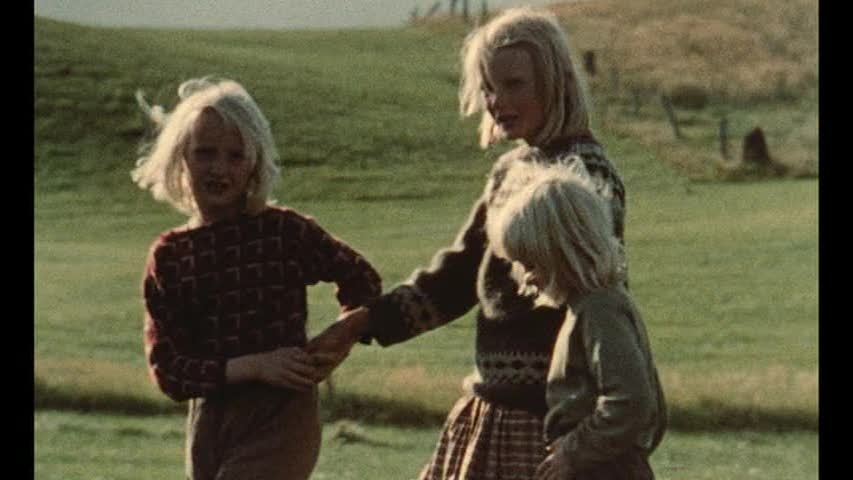
On the other hand, the most masterful examples I can think of from the last two decades — Orson Welles’s F for Fake (1973) and Chris Marker’s Sans soleil (1982) — both flopped commercially in this country. And most of the other distinguished examples from the 70s and 80s seem to appear only on the experimental film circuits: Trinh T. Min-ha’s Reassemblage (1982) and Naked Spaces (1985), Chicago filmmaker Peter Thompson’s Universal Hotel/Universal Citizen (1986-87; available on tape at Facets), Jane Campion’s 1984 Passionless Moments (which showed at the Film Center last weekend), and Jon Jost’s Speaking Directly: Some American Notes (1973; also available on tape at Facets). Read more
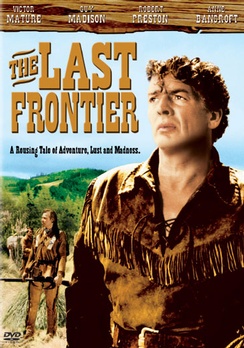
THE LAST FRONTIER, directed by Anthony Mann, with Victor Mature (1955, 97 min.)
Spurred by the enthusiasm of Jean-Pierre Coursodon, posting in the chat group “a film by,” I follow his lead and also see Anthony Mann’s THE LAST FRONTIER for the first time, and I wind up basically agreeing with him: the film is a lot better than its reputation warrants (for one thing, some of the CinemaScope landscapes are breathtaking), and Victor Mature is especially good in it. In fact, it seems pretty clear that the fact that this movie has such an unfashionable cast -– not just Mature, but also Guy Madison, Robert Preston, and James Whitmore, which the relatively fashionable Anne Bancroft can’t quite offset -– has something to do with its apparently low place in the Anthony Mann canon. (The fact that the film has an imposed and unsatisfying ending doesn’t help either, but this is so perfunctory that I find it easy to overlook; Mann almost seems to glide right past it.)

Mature plays a Noble Savage here (a trapper who joins the U.S. Cavalry as a scout), and many people either forget or don’t know that he virtually began his career as a D.W. Read more
Written for the 2019 catalogue of Il Cinema Ritrovato in Bologna. — J.R.

Along with the equally influential 2001: A Space Odyssey, Easy Rider (1969) was one of the key “trip” movies of the late 60s, making its music more expressive than its dialogue and defining a generational divide by cutting audiences into two. As critic J. Hoberman has noted, the film “was above all fashionable” when it first appeared “and hence it dated almost immediately”. Yet arguably it is this datedness (unlike that of 2001) that defines much of its value today, as a time capsule offering certain parallels of hippies versus rednecks with current struggles between progressives and minorities versus reactionary Trump supporters.

Even though Easy Rider, according to auteurist protocols, is mainly associated with its director, costar, and cowriter, Dennis Hopper, it seems appropriate that it’s being shown in Bologna as part of a tribute to Peter Fonda, its producer, costar, and cowriter. Fonda actually originated the project by pitching its basic premise — a contemporary Western with motorcycles replacing horses as its two heroes, named Wyatt (Fonda) and Billy (Hopper) to suggest Wyatt Earp and Billy the Kid, emerge from a drug score to drive east across the country to attend the New Orleans Mardi Gras. Read more
From the Chicago Reader (June 1, 1996). — J.R.

One of Jack Finney’s best and most neglected thrillers, adapted by Sterling Silliphant and John Barnwell — about five college chums scheming to rob Harold’s Club in Reno, Nevada, to prove their ingenuity — yields a tidy Phil Karlson noir (1955), filmed in Reno with a fair amount of grit as well as polish. With Guy Madison, Brian Keith, and the incomparable Kim Novak.
 Read more
Read more
A post on the Chicago Reader‘s blog, Bleader. — J.R.
Adolescent sex in Oberhausen
I’ve just returned from the 53rd International Short Film Festival in Oberhausen, Germany, where I was invited to serve on the jury of FIPRESCI, the international film critics organization. My work, apart from participating in a panel about the privatization of film experience, consisted of seeing the 64 short films in the international competition and, along with two other jurors (Oliver Baumgarten from Cologne and Alexis Tioseco from Manila), awarding one of them a prize. We picked Amit Dutta’s 22-minute Kramasha from India — a dazzling, virtuoso piece of mise en scene in 35-millimeter, full of uncanny imagery about the way the narrator imagines the past of his village and his family.

The Festival had 14 prizes in all, gave a total of 30,000 Euros to many of the winning filmmakers, and concluded with a ceremony that lasted well over two and a half hours. Part of what made the event interesting was the same default position that sustained me through the 64 shorts I saw: the notion that at a festival as genuinely international as this one, a certain education was possible, however limited, in how people in other parts of the world were living and thinking — all of which provides a potential context for better understanding some of the choices involved, conscious or otherwise, in how Americans live and think.
Read more
The following essay was commissioned by Toronto filmmaker Ron Mann in 1992 for the book-spinoff of his documentary Grass. I wrote this around the same time that I reviewed Ghost Dog: The Way of the Samurai for the Chicago Reader, which helped to focus my conclusion; for more aspects of this argument, see “International Sampler”.—J.R.
What Dope Does to Movies
By Jonathan Rosenbaum
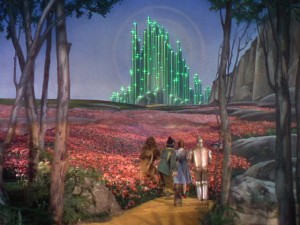
To the memory of Paul Schmidt
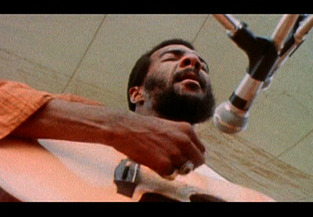
Consider how the camera cuts from Richie Havens’s face, guitar, and upper torso during his second number in Woodstock (1970) to a widening vista of thousands of clapping spectators, then to a much less populated view of the back of the bandstand, where there’s no clapping, watching, or listening — just a few figures milling about near the stage or on the hill behind it. What’s going on? This radical shift in orientation and perspective—a sudden movement from total concentration to Zenlike disassociation — is immediately recognizable as part of being stoned, and Michael Wadleigh’s epic concert film, which significantly has about the same duration as a marijuana high, is one of the first studio releases to incorporate this experience into its style and vision.
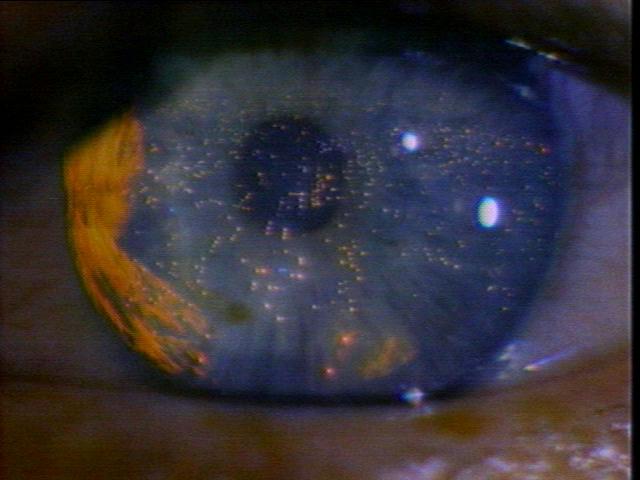
Or think of the way that Blade Runner (1982) starts: a long, lingering aerial view of Los Angeles in the year 2019, , punctuated by dragon-like spurts of noxious yellow flames, with enormous close-ups of a blue eye whose iris reflects those sinister, muffled explosions. Read more
Written for the Jeonju International Film Festival in March 2009. I can happily report that, according to Portabella, his DVD box set containing all or most of his films to date will finally be released later this year. — J.R.

My first problem in coming to terms with No Compteu Amb Els Dits (1967, 26 minutes), Pere Portabella’s first film, is my inability to distinguish between every one of what he himself identifies as its 28 separate fragments, each one reportedly lasting between 15 seconds and two minutes. Counting the segments myself — not with my fingers, but with a pen, a piece of paper, and a VCR — I come up with only 24, not 28 But then again, the only obvious ways of distinguishing one sequence from another are (a) changes in themes, characters, and/or settings, (b) changes in the music, (c) other changes in the soundtrack involving sound effects, dialogue, or narration, (d) switches between black and white and color (or vice versa), and (e) graphic transitions that are apparently similar to those used in Spanish commercials shown in cinemas during this period. And at one point or another, Portabella seems to defy most of these conventions by eliminating or obfuscating such markers. Read more
From the Chicago Reader (July 1, 1988). — J.R.
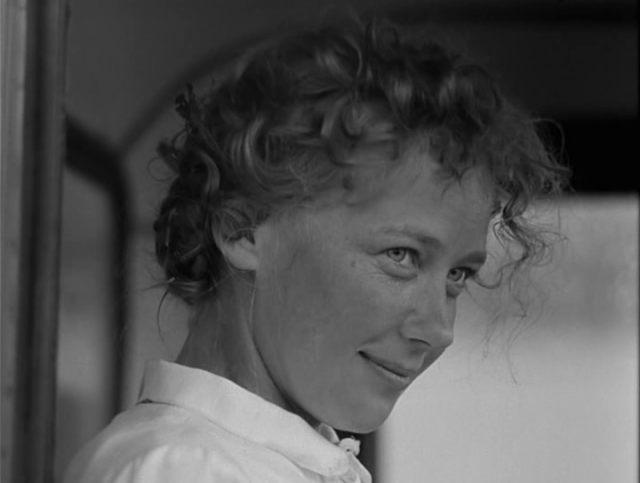

Originally entitled The Story of Asya Klachina, Who Loved a Man but Did Not Marry Him Because She Was Proud, Andrei Konchalovsky’s remarkable 1967 depiction of life on a collective farm, one of his best films, was shelved by Soviet authorities for 20 years, apparently because its crippled heroine is pregnant but unengaged and because the overall depiction of Soviet rural life is decidedly less than glamorous. (The farm chairman, for instance, played by an actual farm chairman, is a hunchback.) Working with beautiful black-and-white photography and a cast consisting mainly of local nonprofessionals (apart from the wonderful Iya Savina as Asya and a couple others), Konchalovsky offers one of the richest and most realistic portrayals of the Russian peasantry ever filmed, working in an unpretentious style that occasionally suggests a Soviet rural counterpart to the early John Cassavetes. Many of the men in the cast relate anecdotes about war and postwar experiences that are gripping and authentic, the interworkings of the community are lovingly detailed, and the handling of the heroine and her boyfriends is refreshingly candid without ever being didactic or sensationalist. Episodic in structure and leisurely paced, the film is never less than compelling. Read more
Published in Sight and Sound, January/February 2019. Alas, this list was put together before I saw A Bread Factory, playing in Chicago at the Gene Siskel Film Center this coming weekend. I’ll be introducing the Saturday screening at 2 pm and interviewing Patrick Wang afterwards. — J.R.
In alphabetical order:
Cold War (Pawel Pawlikowski)

Did You Wonder Who Fired the Gun? (Travis Wilkerson)

The Other Side of the Wind (Orson Welles)

Ray Meets Helen (Alan Rudolph)

Roma (Alfonso Cuarón)

If ties are permitted, I would add The Image Book(best experimental film, Jean-Luc Godard) and First Reformed (best love story, Paul Schrader).

 Read more
Read more
Just posted on the website Con Los Ojos Abiertos (which literally means With the Eyes Open), Christmas 2018. (https://www.conlosojosabiertos.com/la-internacional-cinefila-2018-las-mejores-peliculas-del-ano/)
If I’d sent this in a bit later, I would have somehow managed to include A Bread Factory (Patrick Wang). — J.R.

Best Films:
The Other Side of the Wind (Orson Welles)

The Image Book/Le Livre d’image (Jean-Luc Godard)

Do You Wonder Who Fired the Gun? (Travis Wilkerson)

Roma (Alfonso Cuarón)

The eye was in the tomb and stared at Daney/L’oeil était dans la tombe et regardait Daney (Chloé Galibert-Laîné)
To varying degrees and in different ways, all 0f
of these films or videos are experimental,
which is also true of the two films found below.
Best debut feature: The Chaotic Life of
Nada Kadić (Marta Hernaiz Pidal, Mexico)

Best commercial film from the U.S.: A Simple
Favor (Paul Feig)
 Read more
Read more
From the Spring 1972 issue of Film Comment; this is also reprinted, with a lot of contextual material, in my 2007 collection Discovering Orson Welles (where I’ve also retained my original title — not used by Film Comment, who ran it as an untitled review). I’m still hugely embarrassed by the assertion early in this piece that “[Kael’s] basic contention, that the script of KANE is almost solely the work of Herman J. Mankiewicz, seems well-supported and convincing” — a howler if there ever was one. I’m not sure if this would qualify as a valid excuse, but this was the first lengthy essay about film that I ever published. My joint audio commentary with Jim Naremore on Criterion’s new KANE box set addresses some of Kael’s more dubious factual and critical assumptions.
Recently I‘ve been reading Brian Kellow’s biography of Pauline Kael, and I’m very pleased that he’s up front about the serious flaws of “Raising KANE,” factual and otherwise — but also disappointed that Kellow is unaware that “The Kane Mutiny” — signed by Peter Bogdanovich, and the best riposte to Kael’s essay ever published by anyone — was mainly written by Welles himself. (See This is Orson Welles and Discovering Orson Welles for more about this extraordinary act of impersonation.) Read more
Written for a booklet distributed at the 2018 Venice International Film Festival. — J.R.

Most people reading these words have likely heard about the Iranian New Wave, which conjures up such names as Kiarostami, Makhmalbaf, and Panahi. But until recently, Westerners who have heard about the first Iranian New Wave, whose names include Farrokhzad, Golestan, Kimiavi, and Saless, have been few and far between. Apart from the belated availability in the West of Forough Farrokhzad’s 1962 short film The House is Black, this watershed prerevolution movement in Iranian cinema has almost been lost to history due to the abrupt European exiles of many of its other major artists — Ebrahim Golestan to England, Parviz Kimiavi to France, and Sohrab Shahid Saless to Germany. (Bahram Beizai, Dariush Mehrjui, and Amir Naderi are among the few filmmakers who might be stylistically associated with both waves, but given how seldom their own prerevolution films are seen nowadays, apart from Mehrjui’s The Cow, it’s difficult to say much about them.) Arguably even more innovative as well as more modernist than the second New Wave, and virtually contemporaneous with the French New Wave, Farrokhzad’s The House is Black (1962), Golestan’s Brick and Mirror (1963-64), Kimiavi’s The Mongols (1973), and Saless’ A Simple Event (1974) are masterworks that continue to speak to the present like few other films. Read more
Written for the Savannah-based, online Cine-Files in May 2014, posted circa early June, and reprinted here, with their permission (and some added illustrations). — J.R.

JONATHAN ROSENBAUM: For me, a key part of your argument in Acting in the Cinema (Berkeley: University of California Press, 1988) occurs in your fourth chapter, “Expressive Coherence and Performance within Performance,” when you argue that even a sincere expression of one’s feelings is an actorly performance, “because the expression of ‘true’ feeling is itself a socially conditioned behavior.” Which then leads you to quote from Brecht:
“One easily forgets that human education proceeds along theatrical lines. In a quite theatrical manner a child is taught how to behave; logical arguments only come later. When such-and-such occurs, it is told (or sees), one must laugh….In the same way it joins in shedding tears, not only weeping because the grow-ups do so but also feeling genuine sorrow. This can be seen at funerals, whose meaning escapes children entirely. These are theatrical events which form the character. The human being copies gesture, miming, tones of voice. And weeping arises from sorrow, but sorrow also arises from weeping.” (69)
It seems to me that one reason why acting tends to be neglected in film criticism is that we can too easily confuse it with other elements — writing, directing, the ‘auras” of certain personalities, even certain casting decisions — in much the same way that we’re often confused or misguided about the sources of our own behavior (such as, are we weeping to express sorrow or to produce sorrow?) Read more
From Film Comment (January-February 1973). — J.R.

JEAN RENOIR: THE WORLD OF HIS FILMS by Leo Braudy. Doubleday & Co., New York, 1972; hardcover $8.95; 286 pages; illustrations, index.
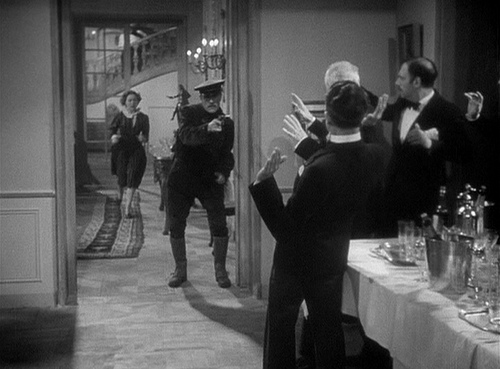
I’ve often wondered why a disproportionate amount of bad film criticism comes from English teachers. One would suppose that anyone devoted to narrative, lyric and dramatic structures would have some sensitivity for and interest in movies, but look at the recent issues of literary magazines like Modern Occasions, Partisan Review and The New York Review of Books and see what they usually have to offer in their “movie chronicles”: bilious, solipsistic professors who waste their time at EASY RIDER and THE GRADUATE (or DEATH IN VENICE and THE GO-BETWEEN) and then conclude that film is a “low art” or an overrated medium because these works don’t live up to the claims of their publicists. Even a critic like Stanley Kauffmann — who should know better — will complain (in a recent Film Comment) that “a list of memorable foreign films” for 1970 would only run to three or four titles, implicitly making the assumption that he’s seen all the likely candidates: a standard literary procedure, at least in America.
Fortunately, Leo Braudy, an English teacher, shares none of the false snobbery and little of the myopia about film that tends to plague his profession. Read more
From Film Comment, September-October 1984. — J.R.
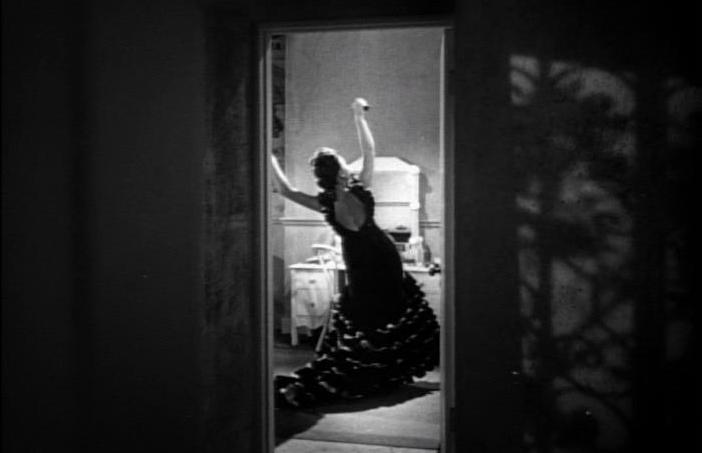

Rear Window, The Leopard Man [see first two photos above], Phantom Lady, The Window, The Bride Wore Black, Mississippi Mermaid. Considering that almost 30 features have been Cornell Woolrich adaptations, it seems a genuine anomaly that he should remain so shadowy a figure. He is as central to the thriller as Olaf Stapledon is to science fiction, and has been comparably eclipsed by a singularity that exceeds and surpasses some genre expectations while grievously falling short of certain others. Despite all the purple prose, tired rewrites, and preposterous plots that crop up in his fiction, perhaps no other writer handles suspense better, or gives it the same degree of obsessional intensity. More soft-boiled than hard-boiled in the depiction of his heroes and heroines, Woolrich nonetheless seems central to the overall pessimism of film noir in the violent contrasts of his moods and the dark tempers of his villains.
Webster’s New Collegiate gives three definitions of dreadful: “(1) (adjective) inspiring fear or awe, (2) (adjective) distressing, shocking; very distasteful, (3) (noun) a morbidly sensational story or periodical; as, a penny dreadful.” Woolrich assumes all these meanings and invents a few more of his own. Read more







































